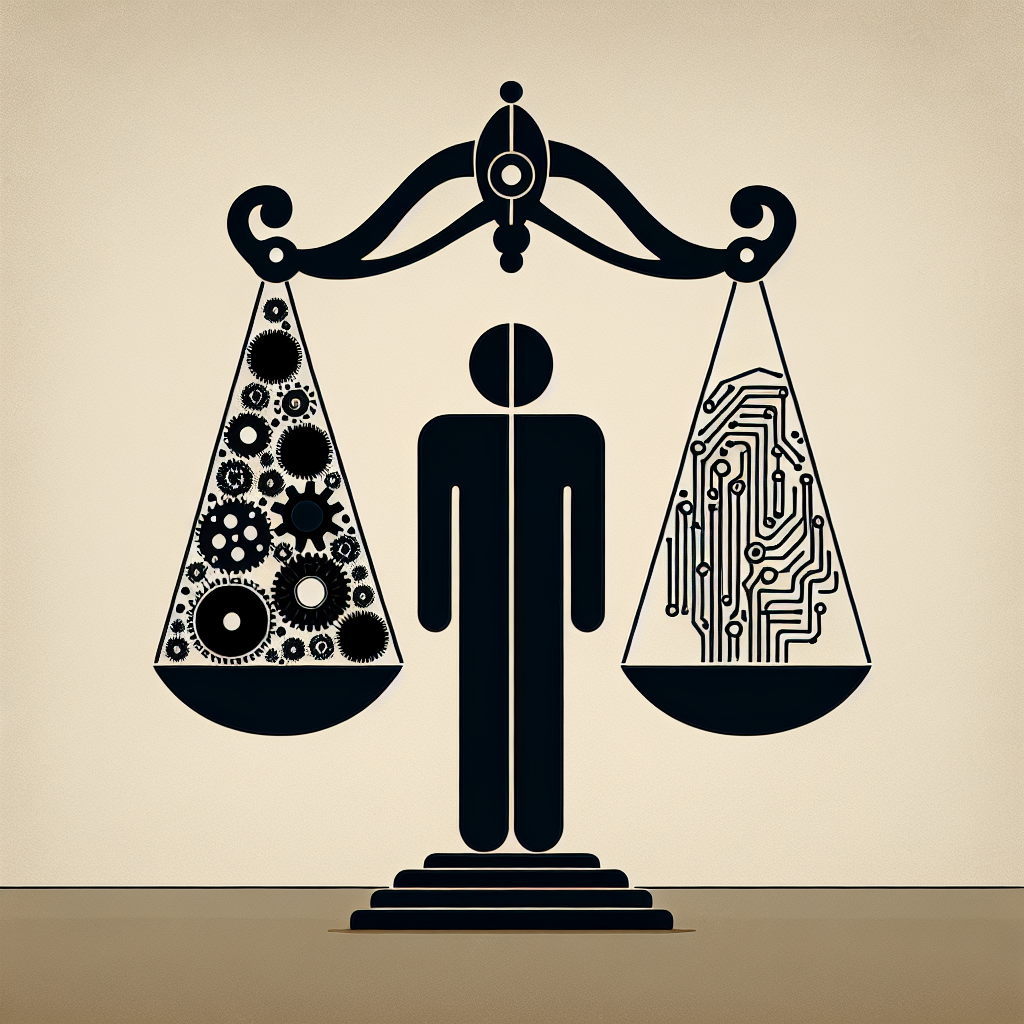Artificial intelligence (AI) has made significant advancements in recent years, with applications in various fields, including healthcare, finance, and law enforcement. In the criminal justice system, AI is being utilized to predict crime, assess risk, and make sentencing decisions. While the use of AI in criminal justice may seem beneficial in terms of efficiency and accuracy, there are significant risks and implications that must be considered, particularly in relation to fairness and equity.
One of the main risks of AI in criminal justice is the potential for bias and discrimination. AI systems are only as good as the data they are trained on, and if the data is biased, the AI system will also be biased. For example, if the data used to train an AI system is based on historical arrest data that disproportionately targets minority groups, the AI system will perpetuate and even exacerbate this bias by making decisions that disproportionately affect these groups.
Another risk of AI in criminal justice is the lack of transparency and accountability. AI systems are often complex and difficult to understand, making it challenging for stakeholders, including judges, lawyers, and defendants, to know how decisions are being made. This lack of transparency can lead to a loss of trust in the criminal justice system and undermine the principles of fairness and due process.
Moreover, the use of AI in criminal justice raises concerns about privacy and data security. AI systems rely on vast amounts of data, including personal information about individuals involved in the criminal justice system. There is a risk that this data could be misused, leaked, or hacked, leading to serious consequences for individuals involved in criminal cases.
Furthermore, the use of AI in criminal justice can have negative implications for human rights. AI systems are programmed to optimize certain objectives, such as reducing crime rates or maximizing efficiency, which may not always align with the principles of justice and human rights. For example, an AI system may prioritize reducing recidivism rates without considering the individual rights of defendants or the impact of harsh sentencing on families and communities.
In addition to these risks, there is concern about the potential for AI to exacerbate existing inequalities in the criminal justice system. AI systems may be more likely to produce biased outcomes for marginalized groups, such as people of color, low-income individuals, and individuals with disabilities, who are already disproportionately impacted by the criminal justice system. This could further entrench systemic inequalities and erode trust in the fairness of the criminal justice system.
Despite these risks, the use of AI in criminal justice continues to grow, with some proponents arguing that AI can help improve decision-making, reduce bias, and increase efficiency. However, it is essential to approach the use of AI in criminal justice with caution and to carefully consider the potential risks and impacts on fairness and equity.
In order to address these risks and ensure that AI is used responsibly in the criminal justice system, there are several steps that can be taken. First, there needs to be greater transparency and accountability in the development and use of AI systems. This includes ensuring that AI systems are explainable, auditable, and subject to oversight by independent bodies to prevent bias and discrimination.
Second, there needs to be robust data protection and privacy measures in place to safeguard the personal information of individuals involved in the criminal justice system. This includes implementing strict data security protocols, obtaining informed consent for data collection and use, and ensuring that data is used for lawful purposes only.
Third, there needs to be ongoing monitoring and evaluation of AI systems to assess their impact on fairness and equity in the criminal justice system. This includes conducting regular audits of AI systems, tracking outcomes for different demographic groups, and making adjustments to algorithms and processes to address any biases or disparities that are identified.
Finally, there needs to be greater awareness and education about the risks and implications of AI in criminal justice among stakeholders, including judges, lawyers, policymakers, and the public. This includes providing training on AI ethics and bias, fostering dialogue on the ethical use of AI in criminal justice, and engaging with communities that are most impacted by AI technologies.
In conclusion, the risks of AI in criminal justice are significant and must be carefully considered to ensure that AI is used responsibly and ethically. By addressing concerns about bias, transparency, privacy, human rights, and inequality, we can work towards building a more fair and equitable criminal justice system that upholds the principles of justice and due process for all individuals involved.
—
FAQs:
Q: How is AI being used in criminal justice?
A: AI is being used in criminal justice for a variety of purposes, including predicting crime, assessing risk, making sentencing decisions, and managing caseloads. AI systems can analyze large amounts of data to identify patterns and trends that may not be apparent to human analysts, helping law enforcement agencies and courts make more informed decisions.
Q: What are some examples of bias in AI in criminal justice?
A: Bias in AI in criminal justice can take many forms, including racial bias, gender bias, and socioeconomic bias. For example, AI systems that are trained on historical arrest data may perpetuate biases against minority groups, leading to disproportionate outcomes for individuals from these groups. It is essential to address bias in AI systems to ensure fairness and equity in the criminal justice system.
Q: How can we ensure that AI is used responsibly in criminal justice?
A: To ensure that AI is used responsibly in criminal justice, it is essential to promote transparency, accountability, data protection, monitoring, and evaluation, and awareness and education. By implementing these measures, we can mitigate the risks of AI in criminal justice and work towards building a more fair and equitable system for all individuals involved.

